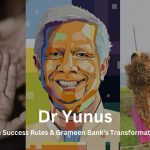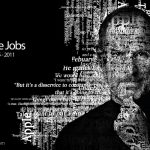When Robert Kiyosaki released Rich Dad Poor Dad in 1997, it quickly became a cornerstone of personal finance literature. Decades later, its lessons still resonate, but the modern financial landscape has evolved dramatically.
This book was nothing short of a cultural phenomenon in personal finance literature. Since its release in 1997, the book has sold over 44 million copies worldwide, translated into 51 languages, and published in more than 109 countries. It stayed on The New York Times bestseller list for over six years, cementing its place as a go-to resource for financial education. Kiyosaki’s ability to simplify complex financial concepts like assets, liabilities, and passive income made these ideas accessible to millions. For a generation unaccustomed to thinking beyond traditional employment, the book provided a much-needed wake-up call. Its ripple effect continues, inspiring countless readers to rethink their financial habits, pursue entrepreneurship, and build wealth. Even in 2025, its core lessons remain a benchmark for financial literacy, albeit with necessary updates to address the evolving economic landscape.
In this article, we’ll revisit Rich Dad Poor Dad through the lens of modern AI driven world, offering critical insights, updated data, and actionable strategies tailored to the middle class striving to navigate a rapidly changing capitalist world.
What “Rich Dad Poor Dad” Teaches
At its core, the book contrasts two philosophies of money management:
- The “Poor Dad” Approach:
Emphasizes working hard, saving diligently, and depending on a secure job for financial stability. - The “Rich Dad” Approach:
Advocates for financial literacy, creating passive income streams, and investing in assets that generate long-term wealth.
Key Takeaways in 2025
- Financial Literacy Remains Crucial:
The importance of understanding money management is timeless. With rising inflation and global uncertainties, this lesson is more relevant than ever. According to the Global Financial Literacy Excellence Center (2023), only 57% of adults worldwide demonstrate financial literacy. - Assets vs. Liabilities:
Kiyosaki’s concept of prioritizing assets (investments) over liabilities (consumer goods) remains foundational. However, today’s asset classes have expanded to include digital currencies, fractional shares, and even NFTs. - Mindset Matters:
Shifting from a scarcity mindset to an entrepreneurial one continues to be a powerful driver of financial success.
Critiquing the Shortcomings
While Rich Dad Poor Dad provides invaluable principles, it also shows its age in some areas:
1. Overemphasis on Real Estate
Kiyosaki hails real estate as the ultimate investment vehicle. While it remains a profitable venture, housing prices in major urban areas have surged by 30-40% in the last decade, making traditional real estate investments less accessible for the middle class.
Modern Alternative:
In 2025, digital real estate (e.g., owning domains or building online businesses) and real estate investment trusts (REITs) offer more affordable entry points. Companies like Fundrise allow small investors to participate with as little as $10.
2. Lack of Technological Relevance
The book predates the digital revolution that reshaped the economy. Kiyosaki’s teachings on business ownership do not address modern opportunities like e-commerce, remote work, and gig platforms, which now represent a $500 billion industry globally (Statista, 2024).
Modern Opportunity:
Start a side hustle leveraging platforms like Shopify, Upwork, or even content creation on YouTube. These require low upfront costs and can generate significant passive income.
3. Dismissal of Formal Education
Kiyosaki’s critique of traditional education as ineffective for building wealth might alienate middle-class readers. Formal degrees still offer advantages in 2025, such as higher starting salaries and broader networks.
Balanced Perspective:
Pair formal education with continuous self-learning. Platforms like Coursera and Udemy offer affordable courses in finance, tech, and entrepreneurship, ensuring practical skills complement academic credentials.
Bridging the Gap: Modernizing Kiyosaki’s Principles
1. Embracing FinTech Innovations
The fintech boom has revolutionized personal finance. From robo-advisors like Betterment to blockchain-based investing, technology makes financial management accessible to everyone.
Example:
Automated apps like Acorns invest spare change, making it easier than ever to build wealth passively.
2. Focus on Low-Cost Index Funds
Instead of high-risk ventures, consider index funds and ETFs. Warren Buffett himself recommends low-cost index funds as a foolproof way to grow wealth. Vanguard’s Total Stock Market ETF (VTI) generated a 12.7% annual return over the last decade (as of 2024).
Why It’s Better:
These options provide diversification and long-term growth without requiring extensive financial expertise.
3. Leveraging the Gig Economy
The gig economy continues to grow, with platforms like Fiverr and TaskRabbit enabling individuals to monetize their skills. By 2025, the global gig economy is projected to reach $455 billion (Mastercard, 2024).
Actionable Step:
Dedicate 5-10 hours weekly to freelance work and reinvest earnings into long-term assets like ETFs or cryptocurrency.
4. Digital Knowledge Monetization
Kiyosaki emphasizes financial education, but 2025 offers new ways to monetize knowledge, such as creating online courses or e-books. Websites like Teachable and Gumroad make it easy for anyone to sell their expertise.
Timeless Lessons with a Modern Twist
Some lessons from Rich Dad Poor Dad remain timeless and even more critical today:
- Pay Yourself First:
Allocate at least 20% of your income to savings or investments before covering expenses. - Invest in Knowledge:
The rise of The Psychology of Money: Timeless Lessons on Wealth, Greed, and Happiness by Morgan Housel underscores the value of understanding behavioral finance. - Build Strong Networks:
In 2025, networking tools like LinkedIn play a pivotal role in career growth and business opportunities.
How Middle-Class Readers Can Apply These Principles Today
Step 1: Start Small but Stay Consistent
Use apps like Stash or Robinhood to invest small amounts in ETFs or fractional shares.
Step 2: Diversify Your Income Streams
Combine traditional jobs with side hustles. Writing, tutoring, or graphic design can generate extra income to reinvest.
Step 3: Automate and Optimize
Automate savings through tools like Mint or Personal Capital, which also offer insights into spending patterns.
Final Thoughts on “Rich Dad Poor Dad”
Rich Dad Poor Dad remains a pivotal guide for financial empowerment, especially for those looking to break free from the cycle of paycheck-to-paycheck living. However, its principles need modern adaptation to suit today’s economic realities.
For middle-class readers navigating the complexities of a capitalist world, blending Kiyosaki’s teachings with new opportunities, such as fintech, the gig economy, and low-cost investing, can unlock sustainable financial freedom.
The journey to wealth begins with knowledge and action. Whether you’re inspired by the money makeover book, Kiyosaki’s Rich Dad Poor Dad, or The Psychology of Money, the key lies in embracing both timeless lessons and modern realities.








3 Responses